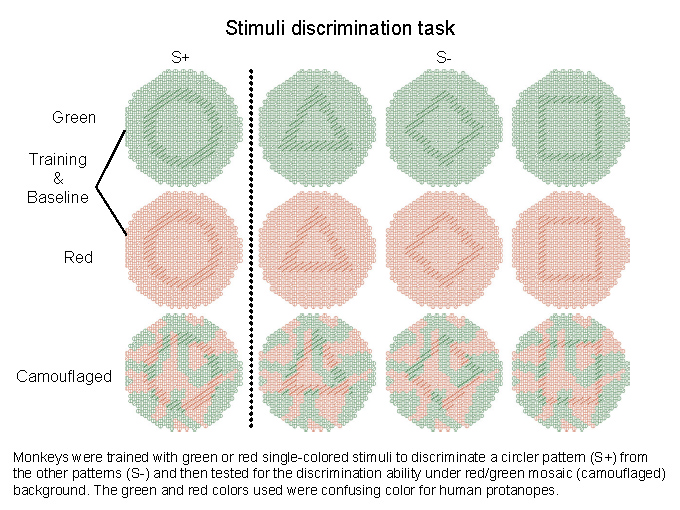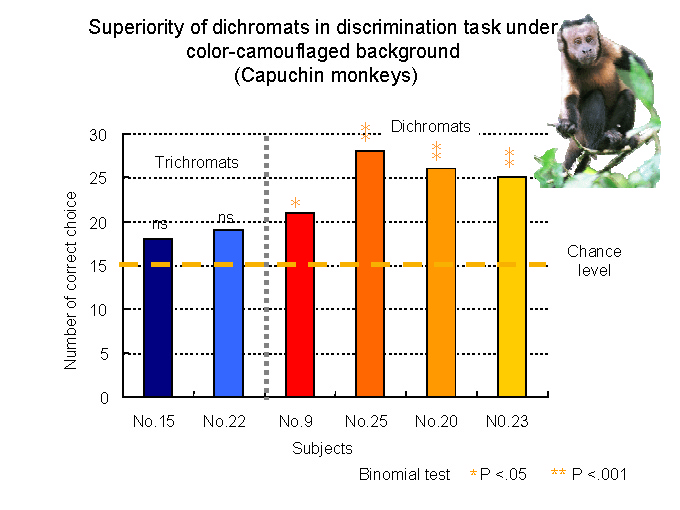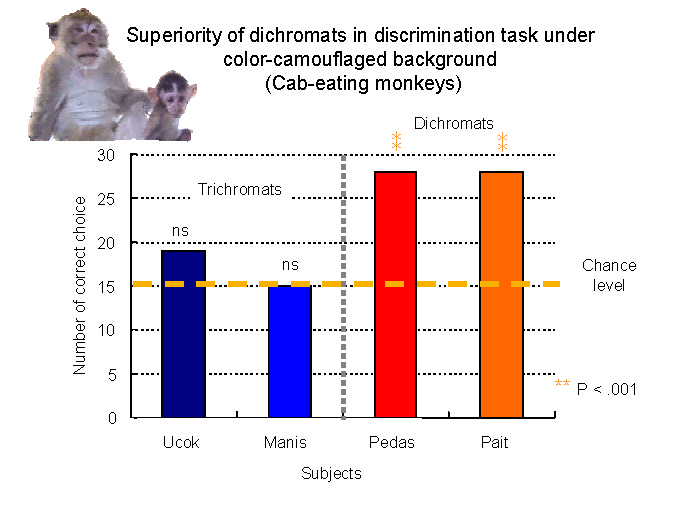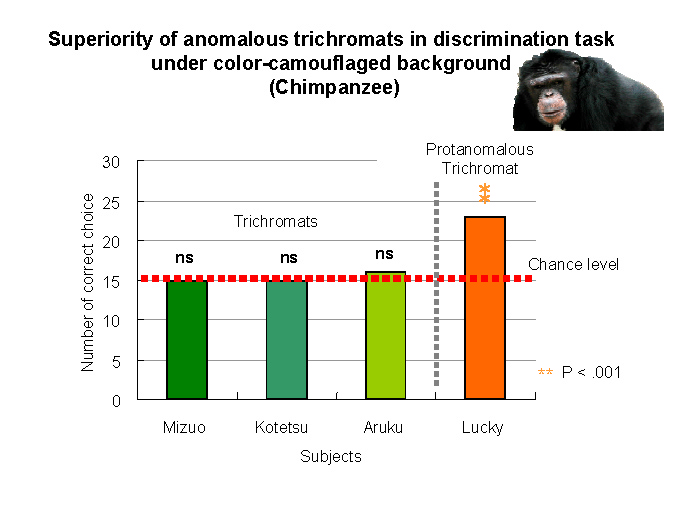Saito, A., Mikami, A. Kawamura, S., Ueno, Y., Hiramatsu, C., Widayati, K. A., Suryobroto, B., Teramoto, M., Mori, Y., Nagano, K.,
Fujita K., Kuroshima, H. and Hasegawa, T. (2005). Advantage of dichromats
over trichromats in discrimination of color-camouflaged stimuli in non-human
primates. American
Journal of Primatology, 67 (4): 425 - 436.




We compared the performance of dichromats and trichromats in a discrimination
task of color-camouflaged stimuli. We examined tri- and dichromatic individuals
of a New World monkey, brown capuchin monkeys (Cebus apella), and an Old World monkey, long-tailed macaques (Macaca fascicularis). We also examined one protanomalous chimpanzee (Pan troglodytes). The subject's task was to discriminate a circular pattern from other
patterns in which textural elements differed in orientation and in thickness
from the background. After being trained in stimuli of a single color,
the subjects were presented with color-camouflaged stimuli with a green/red
mosaic overlaid onto the pattern. The dichromatic monkeys and the protanomalous
chimpanzee selected the correct stimulus under camouflaged conditions significantly
above chance levels, while the trichromats did not. These findings demonstrate
that dichromatic non-human primates possess a superior visual ability to
discriminate color-camouflaged stimuli, and that such an ability might
confer selective advantages with respect to the detection of cryptic foods
and/or predators.







